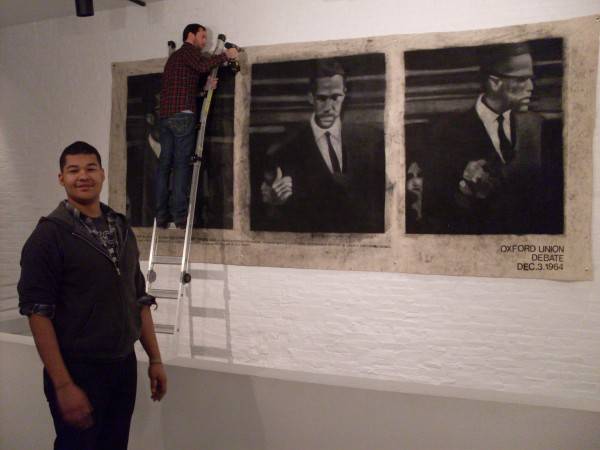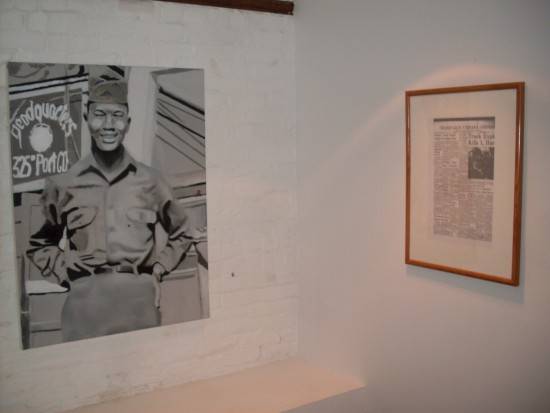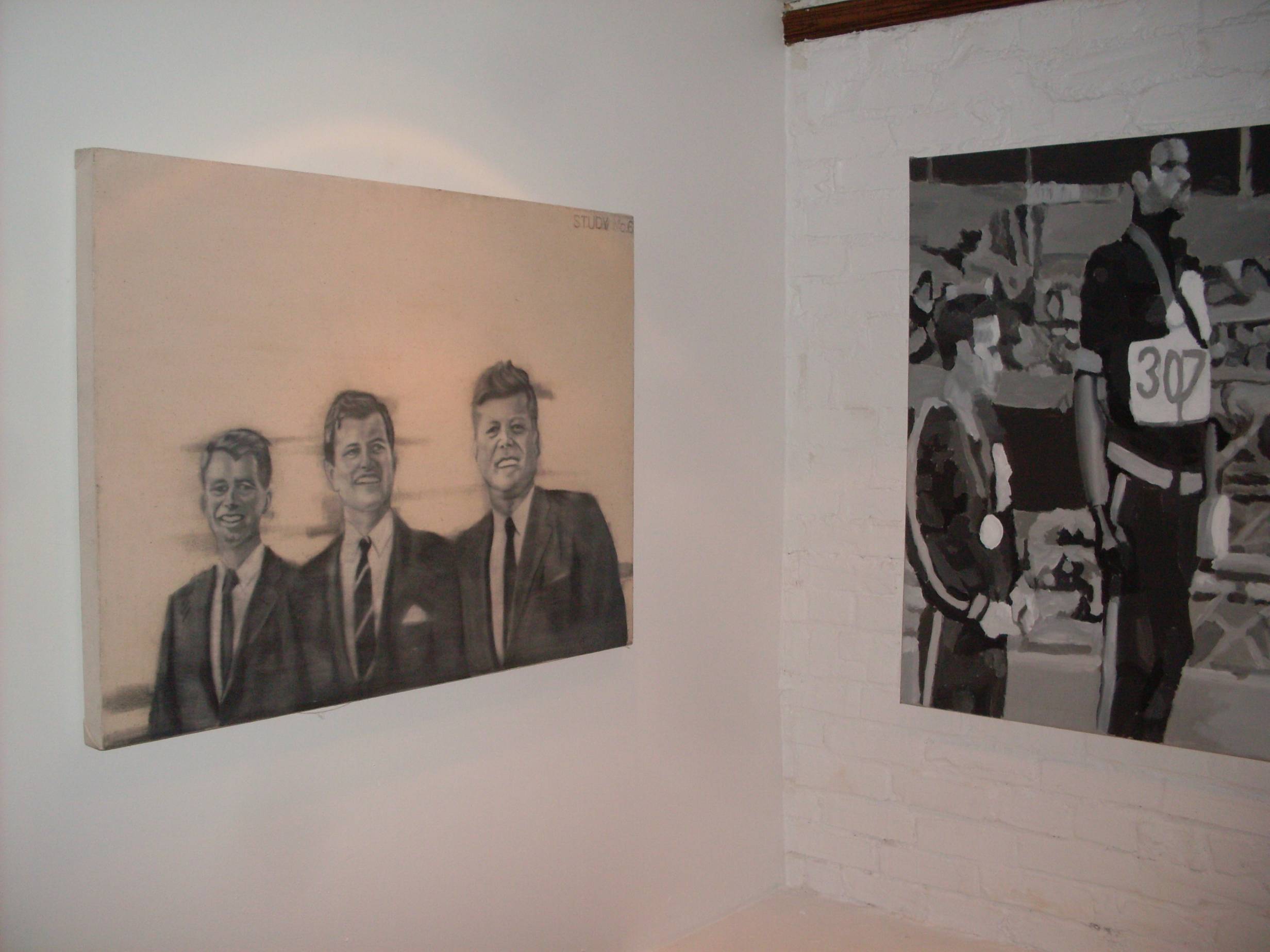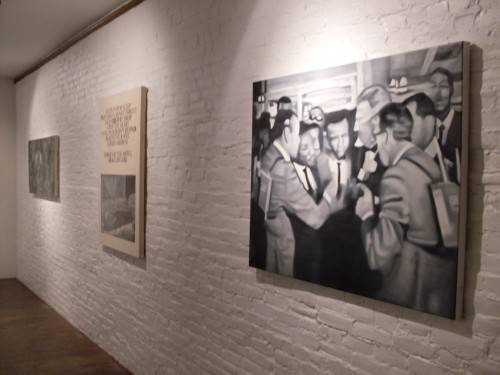 If you live in Champaign-Urbana and you drink coffee, odds are you’ve encountered Jason Patterson’s artwork. His towering canvasses have graced the walls of most every local cafe, but this Friday his solo exhibition Civil Rights Project opens at Indi Go Art Gallery in downtown Champaign with a reception that runs from 7-10 p.m.
If you live in Champaign-Urbana and you drink coffee, odds are you’ve encountered Jason Patterson’s artwork. His towering canvasses have graced the walls of most every local cafe, but this Friday his solo exhibition Civil Rights Project opens at Indi Go Art Gallery in downtown Champaign with a reception that runs from 7-10 p.m.
Often grappling with lofty subjects such as socio-cultural strife, trauma and the past’s presence in our everyday life, Patterson makes use of a sleek, direct aesthetic through the use of iconic imagery and human form. As a result, Patterson’s work unpacks the politics, the hope and the latent ambivalence of the Civil Rights Era while simultaneously challenging the contemporary status quo. Civil Rights Project is sure to compile a great deal of Jason’s confrontational and evocotive work.
Earlier this week, he took some time away from hanging canvasses to trade a few emails with me.
Smile Politely: I understand that you’re hanging your paintings at Indi Go right now in preparation for your opening this Friday. Tell me, what all goes into preparing for a big show like this one?
Jason Patterson: What really got the this Exhibition going was organizing it as a benefit for the Boys & Girls Club. James Barham, the gallery’s own, should really get all the credit for that. He got so many sponsors like both cities and the U of I to back it. And he made sure there was good press covering it.
As far as the actual hanging. We started last week and we’re almost done. The big challenge will be the hanging of the 15ft by 7ft tapestry that depicts Malcolm X at a debate in England in 1964. Everything else has been pretty easy to get up.

Smile Politely: I’ve seen your work all over town, and some of it (like that Malcom X piece) is just enormous — one might even call it confrontational. As an artist, what do you get out of working with such large pieces?
Jason Patterson: For me making large work comes pretty organically. I usually don’t set out to make a giant painting or drawing. I find an image and I guess I try to use my intuition on figuring the size. A lot of times I try to get the people in my pieces close to life size. I think that give it an even more realistic feel to the work. But I am definitely not averts to making small work. There is one particular piece in this series that is very small.
Smile Politely: When did you first start making art?
Jason Patterson: I’ve just always loved to draw and paint people. I never really questioned it. Everything else just seemed boring to me growing up and not enough of a challenge.
Smile Politely: That’s awesome. You seem to do a great deal of portraiture. What do you try to communicate in your interpretation of people’s faces, like in your portrait of Franz Kafka?
Jason Patterson: The Kafka was a Richter copy. The 4 women in this series are also Richter copies (in a way). In 1971-72 Richter painted 48 great European men. I’m doing the same thing but I”m drawing 48 African American women. I have 7 so far and these 4 are in Civil Rights Project.
Smile Politely: How does temporality figure into your work?
 Jason Patterson: If you mean temporality in a literal sense… The work should last. In most of these pieces the only thing touching the canvas is charcoal, pastel and acrylic. The acrylic in gesso or gel form. None of these thing will really rot like oil would on raw canvas. So they got a good 100 to 200 years if kept well. Maybe even more.
Jason Patterson: If you mean temporality in a literal sense… The work should last. In most of these pieces the only thing touching the canvas is charcoal, pastel and acrylic. The acrylic in gesso or gel form. None of these thing will really rot like oil would on raw canvas. So they got a good 100 to 200 years if kept well. Maybe even more.
Now if you mean temporality figuratively… I’m not really sure. I think that’s something that can only be found out after time has past. I would like to see what people think about this work 50 or 60 years from now. I think it’d be just as interesting as looking at a series of work about the end of slavery created at the beginning of the 20th century.
Or, actually it could be a bit like this: One of my favor it artist is Jacob Lawrence and in the early 40’s he did a series of work called “Migration Series” the work depicted the Great Migration by African Americans from the South to the North, West and Mid-West. This is although a little different because he was making work about an event that had only ended 10 years earlier. But still it is interesting to look back and an artist that was himself looking back.

Smile Politely: A nice answer to a poorly worded question. Do you see your work as “looking back?” And if so, what does it see?
Jason Patterson: In a way. I want people to see the movement the way I tried to see it. As something more contemporary or without the retrospective bias. We all know about how great and moving and righteous it was. I want to talk about those event, though this work, a little differently. I want the viewer to feel like they are in 1968 and they’re watching the evening news. So I guess its more like I’m trying to put us back instead of just looking back. I’m trying to let you observe not be told a story.

Smile Politely: As a local artist, do you see your work as being in conversation with your community? And if so, how?
Jason Patterson: I couldn’t tell you much about how my work is taken here publicly. I can only say what people have said to me personally. I’ve mostly only gotten compliments. Some I don’t always think are deserving. Its all very humbling.
Photo Credit: Michael Curtin








